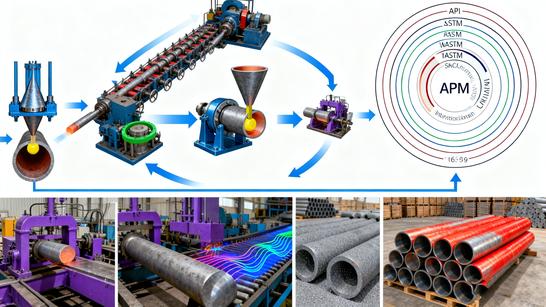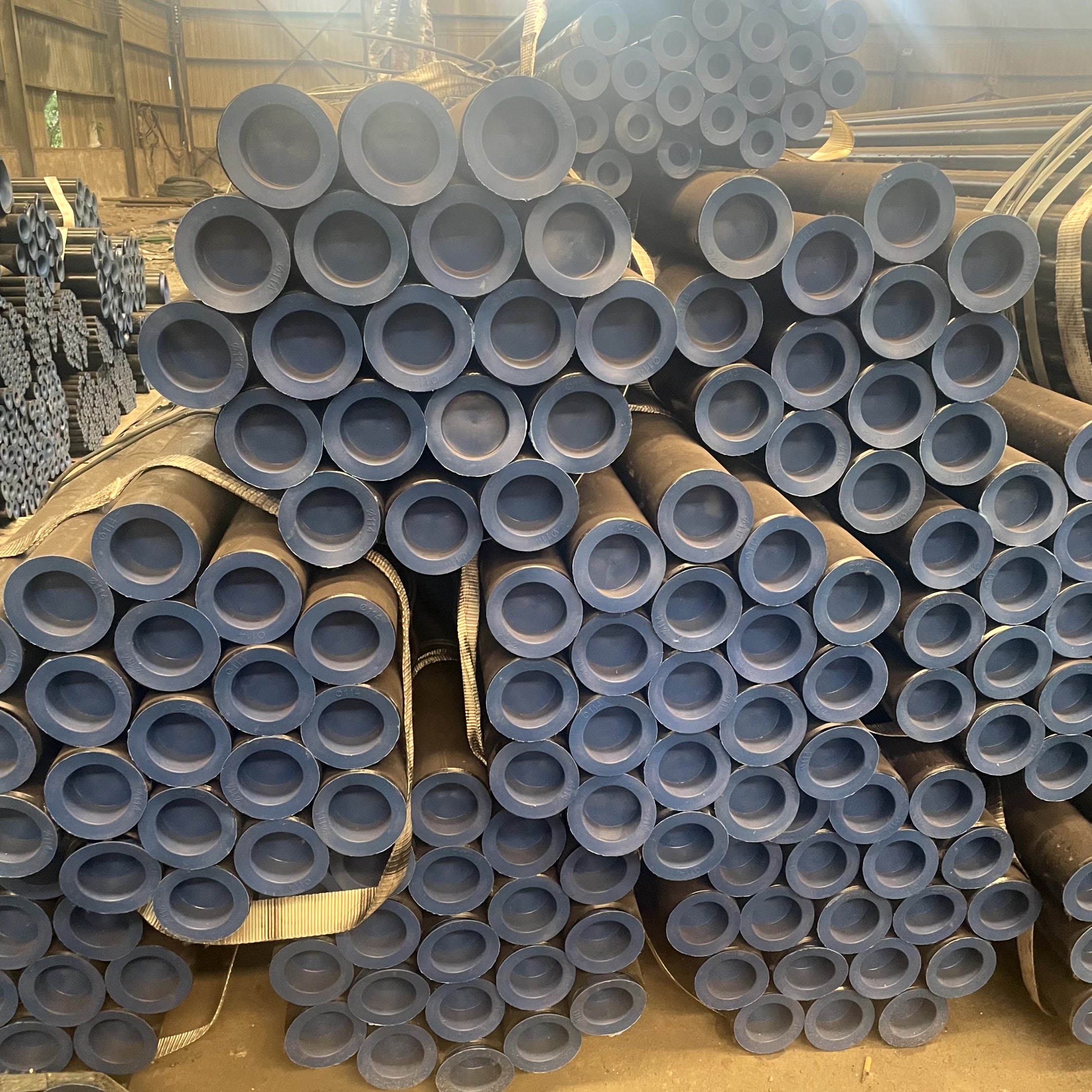In the world of high-pressure fluid conveyance, a pipe's ability to withstand extreme force is its single most critical trait. For engineers designing pipelines in oil & gas, hydraulics, or power generation, understanding how a seamless pipe is manufactured is the key to unlocking its maximum performance potential.
At our core, we master two distinct processes—Hot Rolling and Cold Drawing—each offering a unique set of mechanical properties that dictate a pipe's ultimate pressure rating and optimal use. Here is the engineering insight into choosing the right process for your demanding application.
1. Hot-Rolled Seamless Pipe: The Foundation of Strength
Hot rolling is the primary method for bulk production of medium-to-large diameter seamless pipes. The process involves heating a solid steel billet to high temperatures (above its recrystallization point) before piercing and rolling it into its final dimensions.
Principle and Performance:
-
Yield Strength and Tensile Strength: The hot-rolling process achieves foundational strength and good toughness. The uniform grain structure established during high-temperature forming makes it ideal for handling high operating pressures and temperatures.
-
Cost-Effectiveness: Hot-rolled pipe is the most economical choice for large-scale projects, delivering excellent performance where dimensional tolerances are less restrictive.
-
Typical Applications: High-pressure boilers, general structural applications, large-diameter oil and gas transmission lines, and casing pipes.
| Characteristic | Hot-Rolled Seamless Pipe |
| Manufacturing Temperature | Above 920℃ (Recrystallization point) |
| Dimensional Accuracy | Lower precision; wide Wall Thickness (WT) tolerances. |
| Surface Finish | Relatively rough surface with an oxide scale layer. |
| Pressure Mastery | High strength and ductility for handling large volumes and high operating pressures. |
2. Cold-Drawn Seamless Pipe: Precision for Extreme Pressure
Cold drawing is a secondary process applied to hot-rolled pipes to enhance their properties. This involves drawing the pipe through a die at room temperature. This mechanical work is the secret to its superior performance.
Principle and Performance:
-
Strain Hardening: Drawing the steel below its recrystallization temperature changes its micro-structure, significantly increasing the Yield Strength and Tensile Strength through strain hardening. This is the "performance code" for achieving extreme pressure ratings.
-
Superior Dimensional Accuracy: Cold drawing allows for fine control over the Outer Diameter (OD) and Wall Thickness (WT), resulting in tighter tolerances and a smooth surface finish. This precision is critical for parts that require machining or hydraulic seal integrity.
-
Weight Reduction: The ability to achieve thin, precise walls while maintaining high strength allows engineers to design lighter-weight systems without sacrificing pressure resistance.
-
Typical Applications: Hydraulic cylinders, precision mechanical tubing, automotive axles, and critical heat exchanger systems.
| Characteristic | Cold-Drawn Seamless Pipe |
| Manufacturing Temperature | Room temperature (Below recrystallization point) |
| Dimensional Accuracy | High precision; tight WT tolerances, excellent for demanding fits. |
| Surface Finish | Smooth, bright finish, often requiring minimal post-processing. |
| Pressure Mastery | Highest strength-to-weight ratio, ideal for precision high-pressure hydraulics. |
3. Choosing Your Performance Code: Hot vs. Cold
For engineers, the decision between hot-rolled and cold-drawn hinges on balancing pressure rating, precision, and cost:
| Requirement | Preferred Process | Engineering Rationale |
| Maximum Pressure (High Strength) | Cold-Drawn | The strain hardening effect provides the highest yield strength for a given wall thickness. |
| Lowest Cost (Large Volume) | Hot-Rolled | Higher production speed and fewer processing steps. |
| Tight OD/ID Tolerances | Cold-Drawn | Essential for hydraulic cylinder applications or bearing installations. |
| High Ductility (Toughness) | Hot-Rolled | Generally maintains higher ductility, important for impact resistance. |
At our manufacturing facility, we leverage both hot-rolling and precision cold-drawing lines, ensuring that we match the right process to your specific pressure and dimensional requirements. Our commitment is to provide not just a pipe, but a precisely engineered component that is coded for your project's success.
Consult our engineering team today to decode the optimal seamless pipe process for your most critical high-pressure application.





